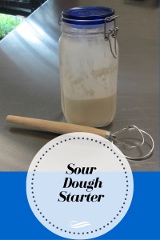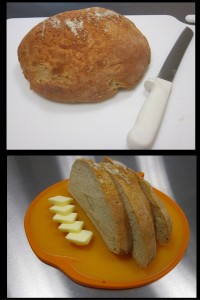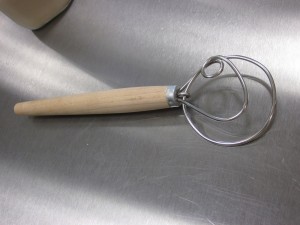Sour Dough for Beginners

Bread baking seems to be a lost art. Bread machines have replaced the action of kneading. Grocery stores are selling artesian style breads. I am sure there are other reasons–but one thing is for sure–nothing beats the smell of fresh baking bread! Any bread for that matter! Once I mastered the art of bread making, I wanted to try different varieties and baking styles. Sour dough was one I have always been curious about.
According to Dictionary.com, the definition of sour dough is “leaven, especially fermented dough retained from one baking and used, rather than fresh yeast, to start the next.” It is a bit of an involved process, but well worth it! It starts with a starter that is made with flour and a liquid, and sometimes a starter mix. You add these ingredients in specific amounts based on your proposed outcome, and let it ferment on the counter. King Arthur Flour explains the process very well: “Friendly bacteria (lactobacilli), present in our natural environment; and the wild yeast attracted to and living on flour begin to work with one another when flour is mixed with warm water.” This causes the mixture to take on leavening capabilities and provides it’s distinct flavor. Science never tasted so good!
Sour dough starters taste different in different parts of the world due to the differences in yeasts available in the area you live. If you bring a starter from San Francisco, it will taste differently once you have maintained it in Omaha. It’s not better or worse–just different. Many bakeries have kept their starter for many years. You continue to “feed it” frequently so you always have more to use, and it can be kept indefinitely. I purchased sour dough starter from a company in San Francisco. I started it in a jar with a loose fitting lid (no seal) a few weeks ago. I started with flour, water and the starter yeast. I “fed” it just as the instructions stated–about everyday until I had enough to bake with. I left it sit out on the cabinet. This is what causes all those amazing bacteria to make it a sour dough starter. You feed starter with more liquid and flour. I used all purpose, but you can make a starter out of any type of flour–rye, whole wheat, etc… I have quite a bit of starter made now, so I just feed it once or twice a week, and keep it in the refrigerator.
When I purchased my starter, I also purchased the cool jar (you can use any type of container with a loose fitting lid) and the stirring stick. I wondered if the stirring stick really worked–but it does an incredible job! I just add my flour and water and give it a quick stir–and voila! It’s done for another time!
I made a loaf of Rustic Sourdough Bread last week, and it didn’t rise well–because I used all purpose flour, not bread flour, which is higher in gluten. Gluten provides the structure for the bread. I usually add vital wheat gluten to my all purpose flour when making bread instead of using bread flour–and it turns out just great! I had forgotten. It still tasted great, it just didn’t rise as nicely. Last night I made the same recipe again, but with the vital wheat gluten, and it rose beautifully! Before I placed it into the hot oven, I sprinkled herbs and cheese on the top. It made the best bread! Give the recipe a try!
You do not have to purchase starter like I did, you can make it yourself. There are many places on the web that have instructions for this. Give it a try! Let me know if you try making your own starter, or using a starter to make a loaf of bread–I would love to see how yours turned out!





